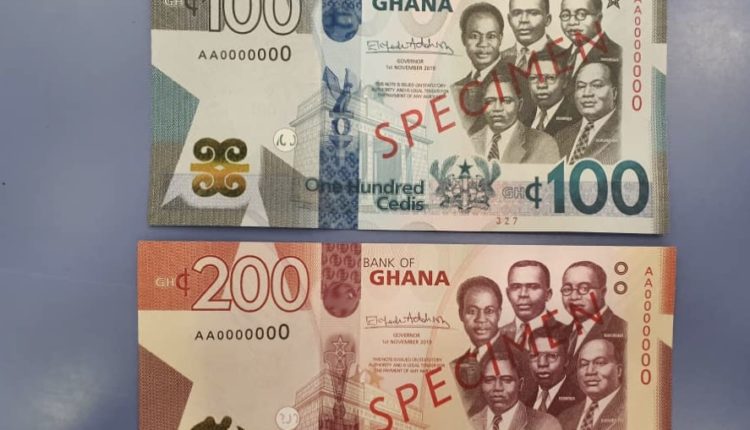Ghanaians have smoothly adjusted to the introduction of the new currency denominations, both notes and coins, introduced by the Bank of Ghana in November 2019.
Even though they had no forewarning and unsurprisingly, public policy commentators, economists and even the political class came up with all sorts of perspectives on the issue, the citizenry has taken the new currency denominations in their stride.
This is partly because so far, very few of the new denominations have found their way into the hands of the average Ghanaian.
This is only to be expected, since the newly issued GHc100 and GHc200 notes are meant to be used primarily by businesses and relatively affluent households who engage in large-sized cash transactions.
Most Ghanaians, whose transactions are mainly retail ones, have no need for the largest denominations now in issue and the central bank is well aware of this.
Sooner than later, however, the new GHc2 coin will find its way into the hands of even the poorest households since they can be conveniently used for retail transactions.
But even this will be limited; there have always been very few GHc1 coins in circulation compared to GHc1 notes, ever since the domestic currency was denominated in 2007.
Major concerns
When the higher denominations were introduced in November 2019, the major concerns were whether the central bank would be able to manage the liquidity implications of the new notes so that it did not inject more liquidity than was required to support economic and activity for the year.
The second concern was whether public education and public acceptance of the new notes would be effective enough to prevent a discounting of lower denominations which would create a rounding up effect and undermine price stability.
Three months on, there is nothing to suggest that the introduction of the higher denomination notes have had any negative impact on price stability or currency stability.
Interestingly, local currency liquidity appears to have tightened over the past week or two. This indicates that the central bank has a firm handle on the liquidity situation despite the introduction of the new higher notes.
Tight cedi
Senior Economist at Databank, Mr Courage Kingsley Martey, says the prevailing tight Ghana cedi liquidity has contributed to the cedi’s strong performance so far in 2020 because key traders are selling their dollars in favour of the cedi.
“This has created more demand for the cedi at the expense of foreign currencies, thereby making the cedi stronger”, he said.
On a year-to-date basis, the Ghana Cedi has appreciated by 4.65 per cent against the dollar with similar trend against the Euro and the British Pounds.
Mr Martey believes the introduction of the new notes has been managed well enough to avert liquidity overhang.
Then again, the higher denominations are not widely circulated and so its use is restricted to only high-valued transactions.
This efficient currency management process has helped to generate a seamless introduction of the new higher denominations without shocks to price stability in goods market and foreign exchange market.
Effectively, the new denomination currency notes are aimed at the upper end of the economic spectrum while the new currency coin denomination is aimed at the lower end.
Convergent issues
But the introduction of both raises convergent issues and implications in two ways.
First is the rationale for the introduction of higher denominations.
Simply put, the cedi’s depreciation over the past 12 years has eroded their value in both dollar and local purchasing power terms.
In 2007, when the GHc50 note was first introduced, it was worth more than US$50. Today, it is worth less than US$10.
This defeats the main reason for the denomination in the first place – the need to eliminate the necessity of carrying huge bundles of cash in order to execute large-sized transactions.
Indeed, even the GHc200, which is now the largest cedi denomination, is not worth what the GHc50 note was when it was first introduced.
Similarly, the GHc1 coin as the largest coin denomination was worth more than $1, but now is worth less than 20 cents.
Even the new GHc2 coin is only worth less than 40 cents, less than half the value of the former highest denomination of coin.




Comments are closed.